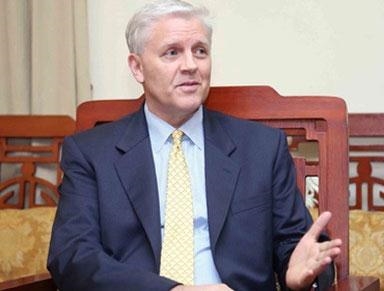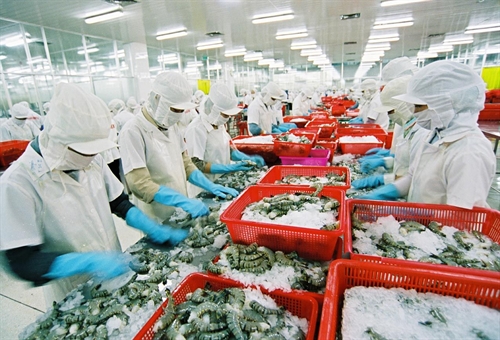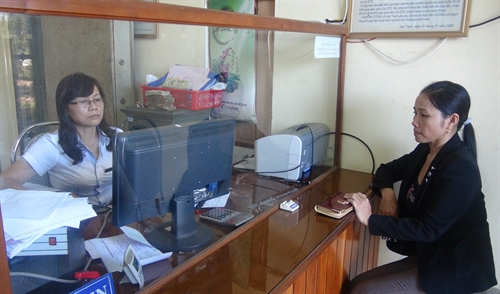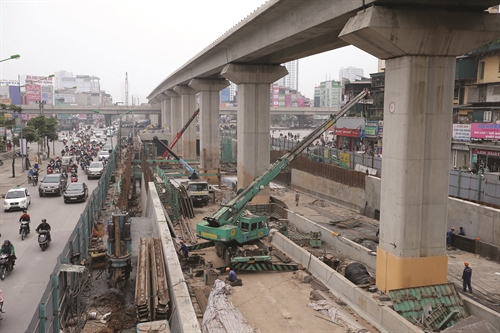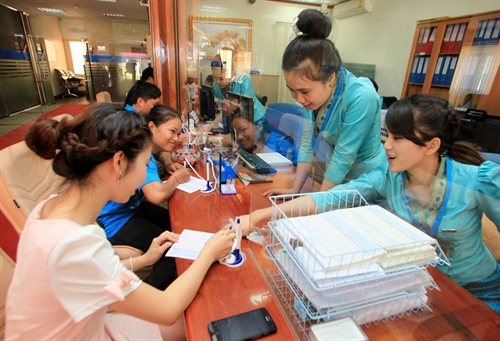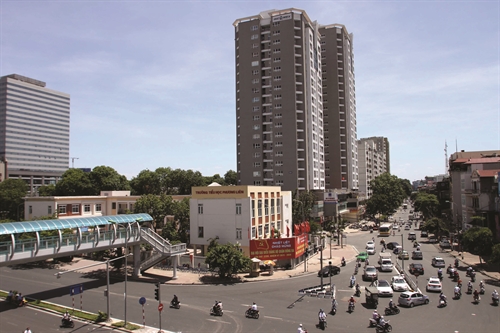This article follows the article on suspension of payments on bankruptcy procedures[1]. It discusses the new provisions of Law No. 51/2014/QH13 dated June 19, 2014, on Bankruptcy (the Law on Bankruptcy) in relation to the stay of proceedings and avoidance of execution against the insolvent enterprise and other related aspects. It aims to provide an overview of the applicable rules and an examination of the shortcomings of the law in this area.
Bui Duc Giang[2]
PhD in law
KEY POINTS:
- Stay of proceedings and execution against the insolvent enterprise is imposed as from the date of acceptance by the court of jurisdiction over the bankruptcy petition;
- The court conducting bankruptcy procedures will handle claims of creditors taking legal actions or completing executions;
- Creditors will be paid in the liquidation of the insolvent enterprise’s assets, subject to general principles on suspension of payment of debts owed by the insolvent enterprise.
1. Stay of legal proceedings
Temporary stay as from the date of acceptance by the court of jurisdiction over the bankruptcy petition -Pursuant to Article 41.2 of the Law on Bankruptcy, within five working days from the date the court accepts jurisdiction over a bankruptcy petition, the court or arbitral tribunal must suspend the resolution of civil, business, commercial and labor cases related to a patrimonial obligation to which the insolvent enterprise is a concerned party. The stay is also extended to the resolution of the civil part of a criminal or administrative case relating to a patrimonial obligation to which the insolvent enterprise is a concerned party.
It should be noted that neither the Law on Bankruptcy nor the Civil Code gives a definition of “patrimonial obligation”. However, reading together Articles 51 thru 58 of the Law on Bankruptcy regarding patrimonial obligations, in particular Article 51.3, it can be inferred that the lawmakers consider patrimonial obligations as debts or money obligations. This is also in line with the general spirit of the Law on Bankruptcy.
As such, as from the date of acceptance by the court of jurisdiction over the petition, creditors cannot institute proceedings against the insolvent enterprise. If they have done so before that date, their legal actions will be temporarily restrained.
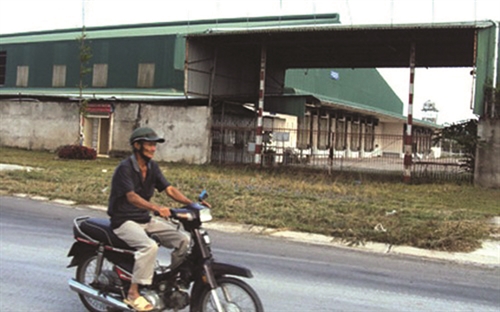 |
| A Tra catfishing plant in Thot Not industrial cluster (Can Tho province) that has ceased operating since 2011__Photo: Internet |
Formal suspension as from the date the court issues a decision on the commencement of bankruptcy proceedings - The temporary stay of resolution of cases involving patrimonial obligations to which the insolvent enterprise is a party will transform into the formal suspension of those cases from the date on which the court issues a decision on the commencement of bankruptcy proceedings against the insolvent enterprise. The court or the arbitral tribunal that has issued a decision on temporary suspension will have to issue a decision on suspension and transfer the case file to the court which is conducting the bankruptcy procedures for resolution (Article 71.2 of the Law on Bankruptcy).
Under Articles 71.2 and 72.2 of the Law on Bankruptcy, immediately after receipt of the case file from the relevant court[3] that has issued the decision to suspend the resolution of the case, the court conducting the bankruptcy procedures must consider and issue a decision on any patrimonial obligation which the insolvent enterprise must discharge in favor of its creditors or on any patrimonial obligation which another party must discharge in favor of the enterprise as follows:
l If the insolvent enterprise must discharge a patrimonial obligation to a third party, such third party has the right to request payment from the enterprise’s estate in the same manner as a creditor;
l If a third party must discharge a patrimonial obligation to the insolvent enterprise, such third party must pay to the enterprise the equivalent value of such patrimonial obligation.
Although those provisions are not very clear, it can be understood that (i) if the court conducting bankruptcy procedures issues a decision requesting the insolvent enterprise to pay a third party, such third party will be mentioned in the list of the insolvent enterprise’s creditors and that (ii) payments made in its favor will be subject to general principles applicable to suspension of payments on bankruptcy proceedings[4].
2. Stay of enforcement proceedings
Temporary stay as from the date of acceptance by the court of jurisdiction over the bankruptcy petition - Article 41.2 of the Law on Bankruptcy provides that within five working days from the date the court accepts jurisdiction over a bankruptcy petition, the civil judgment enforcement office must suspend the execution against assets to which the insolvent enterprise is subject, except for any judgments or decisions obliging the insolvent enterprise to compensate for life, health or honor or to pay salaries to its employees.
It can be observed that this is another protection which the bankrupcty legislation provides to the insolvent enterprise. It gives the insolvent enterprise a breathing spell from its creditors.
Formal suspension as from the date the court issues a decision on the commencement of bankruptcy proceedings - If the court issues a decision to commence bankruptcy procedures, the civil judgment enforcement office that has issued a decision on suspension of the execution against the insolvent enterprise will have to issue a decision on formal suspension of such execution and transfer the file on execution to the court conducting the bankruptcy procedures for resolution (Article 71.2 of the Law on Bankruptcy).
The destiny of judgment creditors will depend on the existence of a decision on seizure of the enterprise’s assets to secure the execution. Indeed, under Article 72.1 of the Law on Bankruptcy, if the decision or judgment of the court has become legally effective and there is a decision on seizue of the enterprise’s assets to secure the execution of such decision or judgment, the judgment creditor will be paid in the same manner as a secured creditor; otherwise he/she/it will be treated as an unsecured creditor. As Article 71.3 of Law No. 26/2008/QH12 on Execution of Civil Judgments dated November 14, 2008, as amended in 2014 (the Law on Execution of Civil Judgments), treats the seizure of the judgment debtor’s assets as a measure to enforce a judgement, and not as a measure to secure the execution[5], one should construe the seizure mentioned in Article 72.1 of the Law on Bankrupcty in the spirit of the Law on Execution of Civil Judgments. Furthermore, provisional measures are applied in the course of resolution of a case (Article 99.1 of the Civil Procedure Code and Article 49.3 of June 17, 2010 Law No. 54/2010/QH12 on Commercial Arbitration), where a final judgment or decision of a court or a final arbitral award has not been issued yet, a creditor who has successfully applied for the seizure of the assets in dispute as a provisional measure will not be paid as a secured creditor. It can also be observed that Article 72.1 mentioned above refers only to court judgments and decisions and not to arbitral awards, which is a pity.
In this regard, it should be borne in mind that the Law on Bankruptcy sets out only general principles applicable to payments made in favor of judgment creditors. Whether judgment creditors are treated as secured or unsecured ones, those payments will be subject to general rules regarding suspension of payments[6]. In other words, on principle, their claims will be paid upon the issuance of a decision declaring the insolvent enterprise bankrupt. The general purpose of the stay of execution is to ensure that all claims which can be proved in the liquidation are enforced in the liquidation and not by competing executions outside it[7].
Is there any conflict of interest between a judgment creditor being paid in the same manner as a secured creditor and other “real” secured creditors of the insolvent enterprise (i.e. those who took security over its assets)? Pursuant to Article 4.4 of Decree No.163/2006/ND-CP dated December 29, 2006, on secured transactions, as amended in 2012,
“in case where a secured transaction is lawfully entered into and is enforceable against third parties, a court or any other competent state agency is not be permitted to seize the secured asset in order to discharge other obligations of the securing party, unless otherwise prescribed by law”.
The law on civil judgment execution allows the seizure of assets in case the pledgor or mortgagor who is also a judgment debtor does not have any assets other than the pledged or mortgaged assets or does have other assets but their value is not sufficient to execute and the value of the pledged or mortgaged assets is greater than the value of the secured obligation plus judgment execution fees and costs. However, on realization of the seized assets, the pledgee or mortgagee will have priority of payment after deduction of judgment execution fees and costs (Articles 47.3 and 90 of the Law on Execution of Civil Judgments). It can be inferred that in that case, the judgment creditor will have priority as a secured creditor over the remaining value of the secured assets after full payment of the secured obligation. This means that the treatment of the judgment creditor as secured creditor will fully benefit him/her/it in case the insovent enterprise’s assets have not been used to secure its obligations toward other creditors.
In light of the above, it can be inferred that the 2014 Law on Bankruptcy addresses in a more satisfactory manner various aspects of the regime of stay of legal and enforcement proceedings. However, there is still room for improvements especially where the lawmakers’ approach does not go far enough or remains unclear. Hopefully, texts implementing the 2014 Law on Bankruptcy will fill in some of those legal gaps and lacunas.-
THE END


